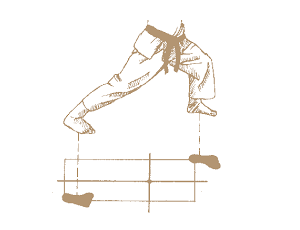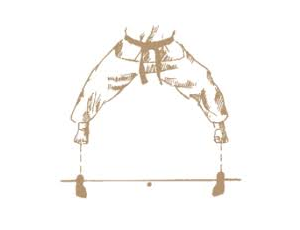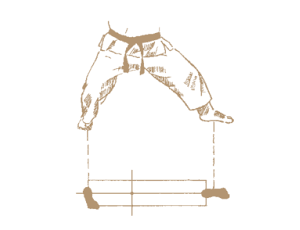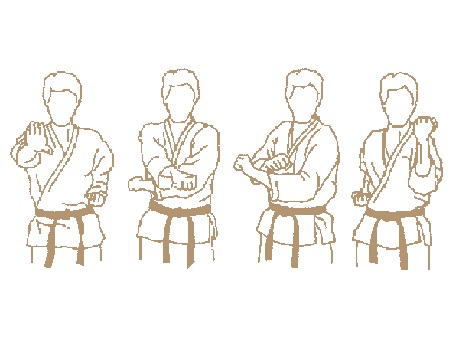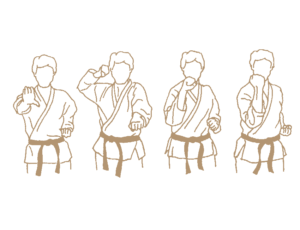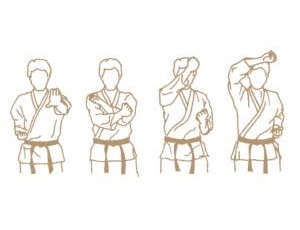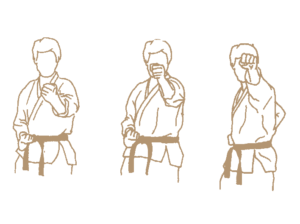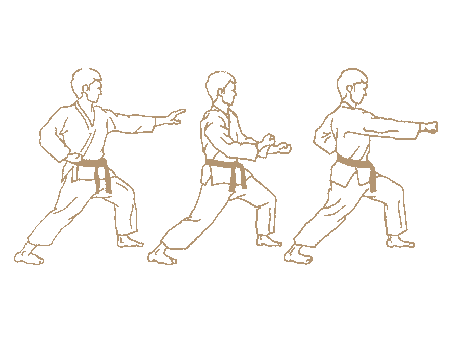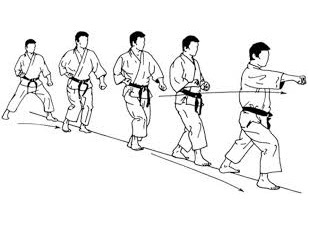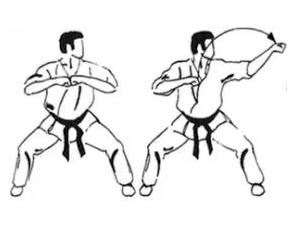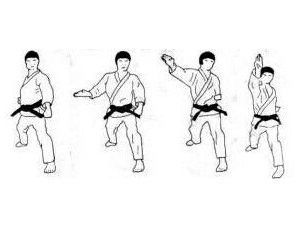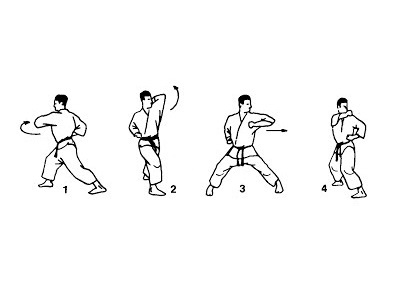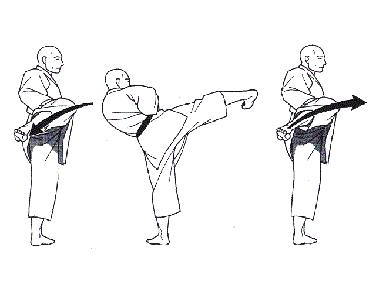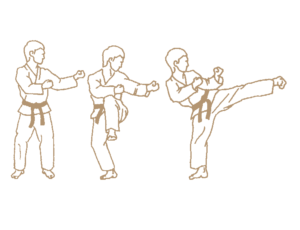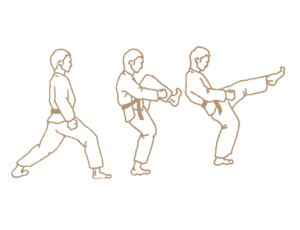Description
Kihon means "basics," or "fundamentals." It is the term used to describe the practice and repetition of the basic techniques of karate. Kihon can be performed with footwork or from a stationary position. It can be performed individually or in large groups.
Kihon can be considered as the alphabet of karate. By organizing various kihon techniques into sequences, kata are created. When learning how to apply kihon techniques to another person, kumite is born. Since kihon is vital to the development of proper karate technique, Shotokan students spend a great deal of time trying to perfect it. Improve your kihon skills, and all other aspects of karate improve automatically. Kihon can be divided into 5 categories.
Stances (Dachi)
Stances form the basis of a karateka's techniques and structure. Shotokan stances tend to be lower and deeper than that of other karate styles. They were designed to lower one's gravity, improve stability, increase reach and develop explosive movement. Without this proper form, an individual cannot deliver a technique with maximum power and can easily be taken off balance.
The three most common stances are:
- Zenkutsu-dachi: The weight is primarily on the front leg.
- Kiba-dachi: The weight is distributed evenly between the legs.
- Kokutsu-dachi: The weight is primarily on the back leg.
Blocks (Uke)
Blocks are used to defend against different attacks. A correctly applied block will allow the defender to effectively counter and stop the aggressor, as it creates an opening in the attack. Interestingly enough, the first move in each kata is a block, symbolizing that karateka is not for aggression, but self defense.
Some of the most common blocks are:
- Uche-uke: The inside block is done by deflecting the attack outwards, from a defensive position where the arms are kept close to the body.
- Soto-uke: The outside block is done by deflecting the attack past the body, where the arm starts to block from outside the attackers' target.
- Age-uke: The rising block is done by deflecting the attack upwards, where the arm is raised above the head, with the forearm at a 90 degree angle.
Punches (Zuki)
Punches are traditionally delivered with the front two knuckles of the fist. Karateka believe the most effective punch to the target is the shortest path, thus the general punch used is a straight punch. The focus when punching is to achieve the maximum speed and power with proper technique by generating the attack from the feet, through the hips and upper body, to the impact point of the fist. By using the correct stance and punching form, this generation of motion can easily be applied to the target.
The three most common punches are:
- Kizami-zuki: A punch delivered quickly with the front hand, commonly known as a jab.
- Gyaku-zuki: A punch delivered with the rear hand.
- Oi-zuki: The lunge-punch, that is delivered by stepping forward into the target and punching with the front hand.
Strikes (Uchi)
Strikes are diverse as the are performed with different parts of the hand or arm. Each technique can impact the target from a multitude of directions and angles. Strikes are most useful against smaller, more specific targets and thus requires good accuracy. Some strikes can act as blocks is well, attacking the attack. The targets for these strikes are the throat, solar plexus, groin, eyes etc.
Some of the most common strikes are:
- Uraken-uchi: The backfist/ backhand strike. This is done by whipping the target with the two knuckles of the fist.
- Haito-uchi. The ridge-hand strike. This is done by swinging the striking hand in an outside arc, twisting the hand before impact so the palm faces down. The impact point is the surface area between the thumb and the index finger's knuckle.
- Empi-uchi: The elbow strike is done by striking the target with the elbow, either by swinging it from the outside-in, or inside-out.
Kicks (Geri)
Karate relies on flexibility, a stable stance and good balance. There are various kick but all require this foundation. Kicks are performed with different parts of the foot, such as the ball, heel, bridge and the edge. Kicks target different surfaces ranging from large areas such as the lower back, to smaller areas such as the temple. An optimal kick generates force (just like punches and strikes) from the stance, through the hips, to the foot on point of impact. In karate the kicks' return path and landing is just as important is the strike, as this pullback creates the same effect as a whip.
The three most common kicks are:
- Mawashi-geri: The round kick is performed by turning the foot outside while keeping the knee aimed at the target. The leg extends to impact the target and snaps back to your buttock before returning to your stance.
- Yoko-geri: The side kick is done by bring the foot to your supporting leg's knee. It is then extended sideways to impact the target with the heel (this can be done by either thrusting or whipping the foot). Thereafter, the foot is returned next to the knee before returning to your stance.
- Mae-geri: The front kick is performed by lifting the knee up above the waistline. The foot is extended to impact the target in front. The leg snaps back with the knee lifted, before returning to your stance.
